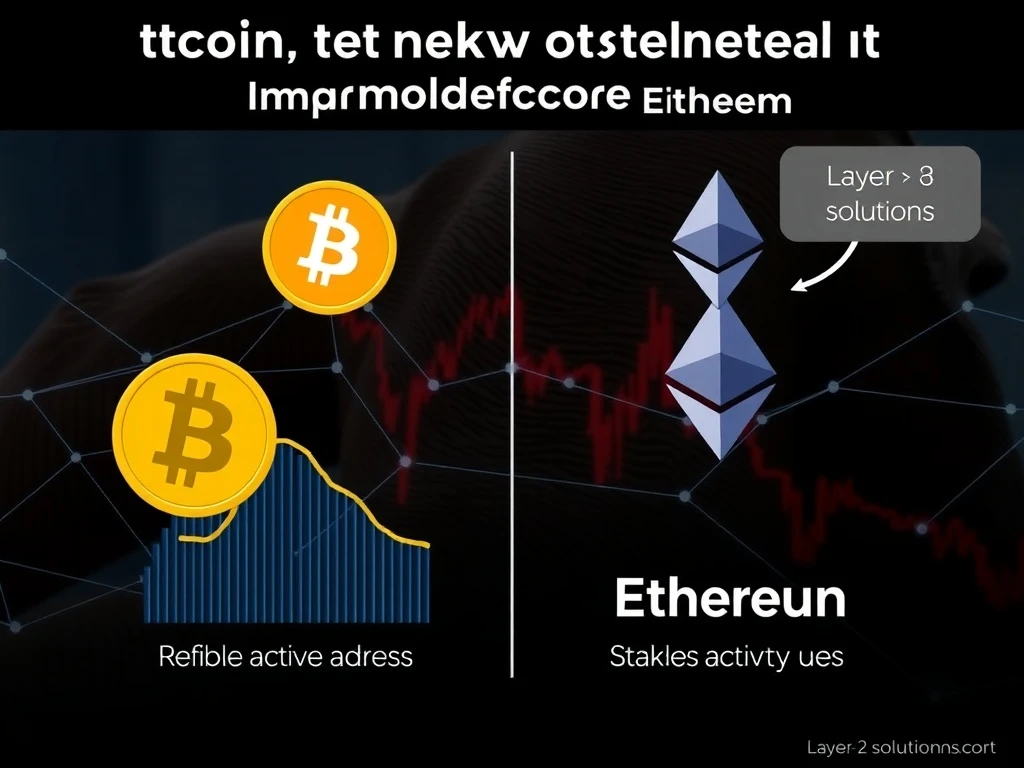Bitcoin Daily Active Addresses Plummet 47.5% in July: Bear Market Fatigue and Layer-2 Growth Shake BTC Adoption

Bitcoin’s network activity took a significant hit in July, with daily active addresses dropping 47.5% amid bear market fatigue and the rise of Layer-2 solutions. What does this mean for BTC adoption, and how does Ethereum compare? Let’s dive into the data.
Bitcoin Daily Active Addresses: A Sharp Decline
According to Santiment, Bitcoin’s daily active addresses fell from 570,000-800,000 at the start of July to just 380,000 by month-end. This 47.5% drop highlights weakening on-chain activity. Key factors include:
- Bear market fatigue reducing transactional demand
- Consolidation into secure wallets (HODLing behavior)
- Layer-2 solutions like Lightning Network moving transactions off-chain
Ethereum Stability Contrasts Bitcoin’s Drop
While Bitcoin struggled, Ethereum maintained ~511,000 daily active addresses. This stability stems from:
| Factor | Bitcoin | Ethereum |
|---|---|---|
| Primary Use Case | Store of value | DeFi, NFTs, Smart Contracts |
| Consensus Mechanism | Proof-of-Work | Proof-of-Stake |
| Transaction Drivers | Speculation/HODLing | DApp usage |
Layer-2 Growth: Hidden Bitcoin Activity?
The Lightning Network and other Layer-2 solutions may be masking true Bitcoin usage. While on-chain addresses decline, off-chain transactions could be growing. This technological evolution means:
- Lower fees for users
- Faster transactions
- Reduced base layer congestion
Investor Takeaways: Beyond Active Addresses
While concerning, the drop in Bitcoin daily active addresses shouldn’t be viewed in isolation. Key metrics to watch:
- Long-term holder behavior
- Miner revenue and hash rate
- Layer-2 adoption rates
- Macroeconomic factors
FAQs
Q: Does the drop in Bitcoin active addresses mean people are losing interest?
A: Not necessarily. It may reflect HODLing behavior and off-chain transaction growth via Layer-2 solutions.
Q: Why is Ethereum’s active address count more stable?
A: Ethereum’s diverse use cases (DeFi, NFTs) create consistent transactional demand unlike Bitcoin’s store-of-value focus.
Q: Should Bitcoin investors be worried about this trend?
A: Investors should monitor multiple metrics. Layer-2 growth may simply indicate evolving usage patterns rather than declining interest.
Q: How does the Lightning Network affect these statistics?
A: Lightning transactions occur off-chain, so they don’t appear in base layer active address counts despite representing real usage.










